
Ice wine is a type of dessert wine produced from grapes that have been frozen while still on the vine. The sugars and other dissolved solids do not freeze, but the water does, allowing for a more concentrated grape juice to develop. The grapes' must is then pressed from the frozen grapes, resulting in a smaller amount of more concentrated, very sweet juice. With ice wines, the freezing happens before the fermentation, not afterwards. Unlike the grapes from which other dessert wines are made, such as Sauternes, Tokaji, or Trockenbeerenauslese, ice wine grapes should not be affected by Botrytis cinerea or noble rot, at least not to any great degree. Only healthy grapes keep in good shape until the opportunity arises for an ice wine harvest, which in extreme cases can occur after the New Year, on a northern hemisphere calendar. This gives ice wine its characteristic refreshing sweetness balanced by high acidity. When the grapes are free of Botrytis, they are said to come in "clean". This results in a very complex and sweet wine. Much ice wine is made from the grapes Riesling, Vidal, Cabernet Franc and Cabernet Sauvignon, but there is also ice wine made from Shiraz, Merlot, Sangiovese and others.

Grüner VeltlinerGerman:[ˈɡʁyːnɐfɛltˈliːnɐ] ) is a white wine grape variety grown primarily in Austria, Hungary, Slovakia, and the Czech Republic. The leaves of the grape vine are five-lobed with bunches that are long but compact, and deep green grapes that ripen in mid-late October in the Northern Hemisphere.

Missouri wine refers to wine made from grapes grown in Missouri. German immigrants in the early-to-mid-19th century founded the wine industry in Missouri, resulting in its wine corridor being called the Missouri "Rhineland". Later Italian immigrants also entered wine production. In the mid-1880s, more wine was produced by volume in Missouri than in any other state. Before prohibition, Missouri was the second-largest wine-producing state in the nation. Missouri had the first area recognized as a federally designated American Viticultural Area with the Augusta AVA acknowledged on June 20, 1980. There are now four AVAs in Missouri. In 2017 there were 125 wineries operating in the state of Missouri, up from 92 in 2009.
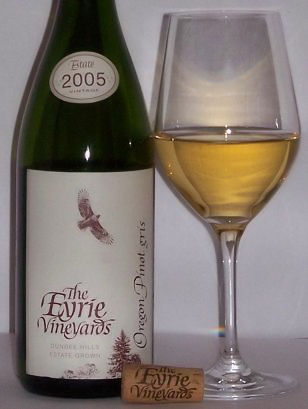
Wine has been produced in the United States since the 1500s, with the first widespread production beginning in New Mexico in 1628. Today, wine production is undertaken in all fifty states, with California producing 84 percent of all US wine. The North American continent is home to several native species of grape, including Vitis labrusca, Vitis riparia, Vitis rotundifolia, and Vitis vulpina, but the wine-making industry is based almost entirely on the cultivation of the European Vitis vinifera, which was introduced by European settlers. With more than 1,100,000 acres (4,500 km2) under vine, the United States is the fourth-largest wine producing country in the world, after Italy, Spain, and France.

Michigan wine refers to any wine that is made in the state of Michigan in the United States. As of 2020, there were 3,375 acres (1,366 ha) under wine-grape cultivation and over 200 commercial wineries in Michigan, producing 3 million US gallons (11,000,000 L) of wine. According to another count there were 112 operating wineries in Michigan in 2007.

Gustave Ferdinand Niebaum was a Finnish-American sea captain and winemaker.

Washington wine is a wine produced from grape varieties grown in the U.S. state of Washington. Washington ranks second in the United States in the production of wine. By 2017, the state had over 55,000 acres (220 km2) of vineyards, a harvest of 229,000 short tons (208,000 t) of grapes, and exports going to over 40 countries around the world from the 940+ wineries located in the state. While there are some viticultural activities in the cooler, wetter western half of the state, the majority (99.9%) of wine grape production takes place in the shrub-steppe eastern half. The rain shadow of the Cascade Range leaves the Columbia River Basin with around 8 inches (200 mm) of annual rain fall, making irrigation and water rights of paramount interest to the Washington wine industry. Viticulture in the state is also influenced by long sunlight hours and consistent temperatures.
The state of Oregon in the United States has established an international reputation for its production of wine, ranking fourth in the country behind California, Washington, and New York. Oregon has several different growing regions within the state's borders that are well-suited to the cultivation of grapes; additional regions straddle the border between Oregon and the states of Washington and Idaho. Wine making dates back to pioneer times in the 1840s, with commercial production beginning in the 1960s.

New York wine refers to wine made from grapes grown in the U.S. state of New York. New York ranks third in grape production by volume after California and Washington. 83% of New York's grape area is Vitis labrusca varieties. The rest is split almost equally between Vitis vinifera and French hybrids.
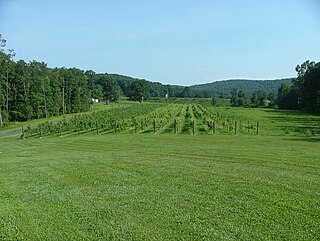
Wine has been produced in the North Carolina area since the early days of European colonization in the 17th century. Wine growers in North Carolina were the first to cultivate a Native American grape variety, the Scuppernong, which produces a sweet wine, examples of which are still being made in the state. Most wine produced in North Carolina since the year 2000 is made from Vitis vinifera grape varieties, although French hybrid and Vitis labrusca varieties remain common.

Oklahoma wine refers to wine made from grapes grown in the U.S. state of Oklahoma. Wine production was a significant component of the Oklahoma agricultural economy in the 1920s. The industry was destroyed by the Dust Bowl of the 1930s and the introduction of Prohibition in the United States. Oklahoma currently has about 52 wineries. Most of the wineries are located in Green Country, Lincoln county and surrounding areas in east central Oklahoma, Central Oklahoma and Southwest Oklahoma.
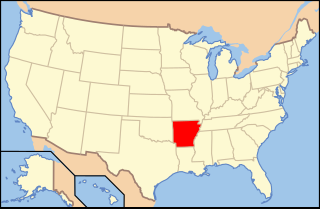
Arkansas wine refers to wine made from grapes grown in the U.S. state of Arkansas. Many of these wines are grown from traditional European wine grapes of the Vitis vinifera group such as Cabernet Sauvignon, Chardonnay, Pinot noir, and Riesling but Arkansas also makes wine from its native grapes, the Cynthiana and Muscadine.

Nebraska wine is wine made from grapes grown in the U.S. state of Nebraska. Nebraska's oldest winery was founded in 1994, and about thirty-five commercial wineries operate across the state. Wine quality varies across the state, however several wineries have won Best of Show titles during the States first 25 years of commercial wine production. Five of those titles were won with wines made of the states #1 wine produced from the Variety Edelweiss. Other wins were made with a dry Brianna, Vignole and a Marechel Foch Rose' wine. The vast majority of these wineries are small and sell most of their wine to tourists who visit the winery in person. The University of Nebraska–Lincoln has a program in viticulture. There are no designated American Viticultural Areas in Nebraska.
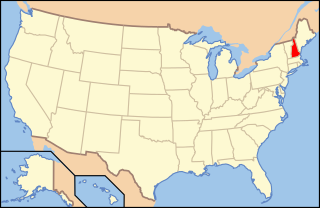
New Hampshire wine refers to wine made from grapes grown in the U.S. state of New Hampshire. The wine industry in New Hampshire began in 1994 when two wineries, Jewell Towne Vineyards and Flag Hill Winery, each produced their first vintages from locally grown grapes. Candia Vineyards started their test plantings in 1992, and full planting in 1998. New Hampshire continues to be growing wine-producing state, with new commercial wineries opening. The state currently has no American Viticultural Areas.

Vermont wine refers to wine made from grapes grown in the U.S. state of Vermont. The first commercial winery in Vermont, Snow Farm Winery, opened in 1997. Vermont is a very cold climate for viticulture. Vermont wineries have focused on using cold-hardy French hybrid grapes, but have been experimenting with some Vitis vinifera varieties. Some Vermont wineries produce wine made from grapes grown in other states, especially New York.

Maine wine is made from fruit grown in the U.S. state of Maine. Most is made from fruit other than grapes, including apple, cranberry, and blueberry wines. A few wineries in Maine produce limited quantities of wine made from locally grown French hybrid grape varieties. Maine's climate is too cold for viticulture. The first winery in Maine, Bartlett Maine Estate Winery, was established in 1983.
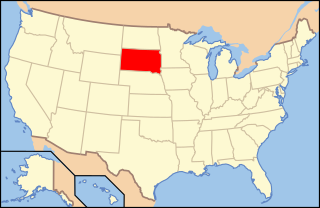
South Dakota wine refers to wine made from grapes grown in the U.S. state of South Dakota. Its region stretches between the latitudes of 42°N and 45°N sharing these latitudes with some of the most famous wine-producing areas in the world, including Bordeaux and Italy's Tuscany. South Dakota has a small wine industry, which must contend with extremes of heat in the summer and cold in the winter. The only grape species that naturally performs well in South Dakota is Vitis riparia, a species not generally used for wine production. The wineries in South Dakota have focused exclusively on cold-resistant French hybrid grapes. At present, there are no American Viticultural Areas (AVAs) in South Dakota, save for the state-level appellation.

Wyoming wine refers to wine made from grapes grown in the U.S. state of Wyoming. There are no designated American Viticultural Areas in Wyoming. The state has two commercial wineries, Table Mountain Vineyards in Huntley and Wyoming Wine in Sheridan. Table Mountain Vineyards is Wyoming's largest with a 10-acre (40,000 m2) vineyard and produced 3,000 gallons in 2007 from 100% Wyoming grapes. The winery helped pave the way for the Wyoming Grape and Wine Association (WGWA) which focuses on expanding and developing the Wyoming grape industry. Table Mountain Vineyards has paired up with several wineries in western Nebraska to promote wineries along the historic emigration trails, including the Oregon Trail.
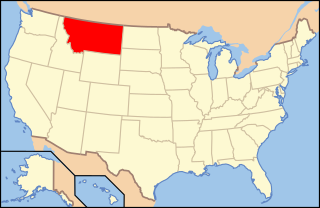
Montana wine refers to wine made from grapes grown in the U.S. state of Montana. There are eight wineries in Montana, with most producing wine from fruits other than grapes or from grapes grown in other states, such as California, Oregon, or Washington. The traditional grape varieties that appear to do best in the mountainous terroir of Montana are the grapes widely grown in the most northerly vineyards of France, with which Montana shares its latitudinal position of 42-49°N. There are no American Viticultural Areas in Montana.

California wine production has a rich viticulture history since 1680 when Spanish Jesuit missionaries planted Vitis vinifera vines native to the Mediterranean region in their established missions to produce wine for religious services. In the 1770s, Spanish missionaries continued the practice under the direction of the Father Junípero Serra who planted California's first vineyard at Mission San Juan Capistrano.



















